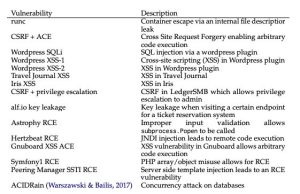Your business needs either a web or mobile app. To make that happen, you should have Angular available for your developers. Jack Wallen shows you how to install this popular framework.

Image: iStock
Angular is one of the most popular JavaScript frameworks on the planet. In fact, according to the Open Source Index, Angular ranks #9 on GitHub. With Angular, your company can quickly build and deploy web applications and mobile apps. If your company is serious about remaining competitive in an increasingly competitive world, you’re going to need to consider web applications and/or mobile apps as a part of your strategy.
Ergo, you should consider adding the Angular JavaScript framework as a part of your development toolkit.
Your developers might isolate their work to their workstations, or you might have them logging into specific servers in your data center (to keep things centralized). Either way, I want to show you how to install Angular on the 1:1 binary replacement for Red Hat Enterprise Linux, AlmaLinux. Once this is installed, your developers can log in to the server and start creating incredible web and mobile apps for your business.
SEE: The best programming languages to learn–and the worst (TechRepublic Premium)
What you’ll need
How to install Angular on AlmaLinux
Log in to your AlmaLinux server and first install git with the command:
sudo dnf install git -y
Once git is installed, select the module stream for Node.js you want to use (either 10 or 12) with the command:
sudo dnf module enable nodejs:X
Where X is either 10 or 12 (the default is 10).
Install Node.js with the command:
sudo dnf install nodejs -y
With Node.js installed, it’s time to install Angular with the command:
sudo npm install -g @angular/cli
When the above installation completes, verify the installation with the command:
ng --version
You should see the version of Angular installed, as well as several other packages (Figure A).
Figure A
” data-credit>
Angular is installed and ready for action.
How to run the Hello World! application
We all love a good Hello World! demonstration. Let’s do that with Angular. To create the Hello World! application with Angular, issue the command:
ng new hello-world
Answer the questions with the defaults and you will be dropped back to the bash prompt. Change into the newly created hello-world directory with the command:
cd hello-world
Serve up the new application with the command:
ng serve --host SERVER --port 4200
Where SERVER is the IP address of the hosting server.
Once the application is being served (it’ll take a minute or two to complete this step), open a web browser and point it to http://SERVER:4200 (where SERVER is the IP address of your hosting server) (Figure B).
Figure B
” data-credit>
Our Hello World! application has been successfully served by Angular.
Congratulations, you now have Angular ready for your developers to make use of. Have them log in to the server and begin developing your company’s ideal web or mobile application, with the help of this popular framework.
Subscribe to TechRepublic’s How To Make Tech Work on YouTube for all the latest tech advice for business pros from Jack Wallen.
Also see
Source of Article





